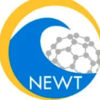Research Experience and Training Coordination Core (RETCC)
2024
Jan
18
2024
Feb
15
. 2023. “Sous Vide-Inspired Impregnation of Amorphous Titanium (Hydr)Oxide into Carbon Block Point-of-Use Filters for Arsenic Removal from Water.” Environmental Science & TechnologyEnvironmental Science & Technology, 57, 48, Pp. 20410-20420. Publisher's Version
. 2023. “Early-life participation in cognitively stimulating activities and risk of depression and anxiety in late life.” Psychol Med, Pp. 1-9.Abstract
Breise and Nwokonkwo elected NEWT SPLC Co-Presidents
. 9/8/2023. “Functionalized Ferrocene Enables Selective Electrosorption of Arsenic Oxyanions over Phosphate─A DFT Examination of the Effects of Substitutional Moieties, pH, and Oxidation State.” The Journal of Physical Chemistry A, Pp. null. Publisher's Version
2023
Nov
30
2023
Oct
26
2023
Sep
28
. 2023. “Bias Amplification and Variance Inflation in Distributed Lag Models Using Low-Spatial-Resolution Data.” Am J Epidemiol, 192, 4, Pp. 644-657. Publisher's VersionAbstract
. 2023. “Elucidating the Role of Capping Agents in Facet-Dependent Adsorption Performance of Hematite Nanostructures.” ACS Appl Mater Interfaces, 15, 29, Pp. 34829-34837.Abstract
. 2020. “Exploring the Mechanisms of Selectivity for Environmentally Significant Oxo-Anion Removal during Water Treatment: A Review of Common Competing Oxo-Anions and Tools for Quantifying Selective Adsorption.” Environ Sci Technol, 54, 16, Pp. 9769-9790.Abstract
. 2023. “Sociodemographic Disparities in Mercury Exposure from United States Coal-Fired Power Plants.” Environ Sci Technol Lett, 10, 7, Pp. 589-595. Publisher's VersionAbstract
. 12/2023. “Arrestin domain-containing protein 1-mediated microvesicles (ARMMs) protect against cadmium-induced neurotoxicity.” Extracellular Vesicle, 2, Pp. 100027. Publisher's VersionAbstract
. 2023. “Mechanistic Study of Arsenate Adsorption onto Different Amorphous Grades of Titanium (Hydr)Oxides Impregnated into a Point-of-Use Activated Carbon Block.” ACS ES&T EngineeringACS ES&T Engineering, 3, 7, Pp. 989 - 1000. Publisher's VersionAbstract

 Donna Vorhees is CEO and Vice President of HEI Energy, Boston, a nonprofit affiliate of the
Donna Vorhees is CEO and Vice President of HEI Energy, Boston, a nonprofit affiliate of the  RETCC Trainee Work in Progress:
RETCC Trainee Work in Progress: 
 MEMCARE-SRC Trainee Work-in-Progress and RETCC meeting
MEMCARE-SRC Trainee Work-in-Progress and RETCC meeting